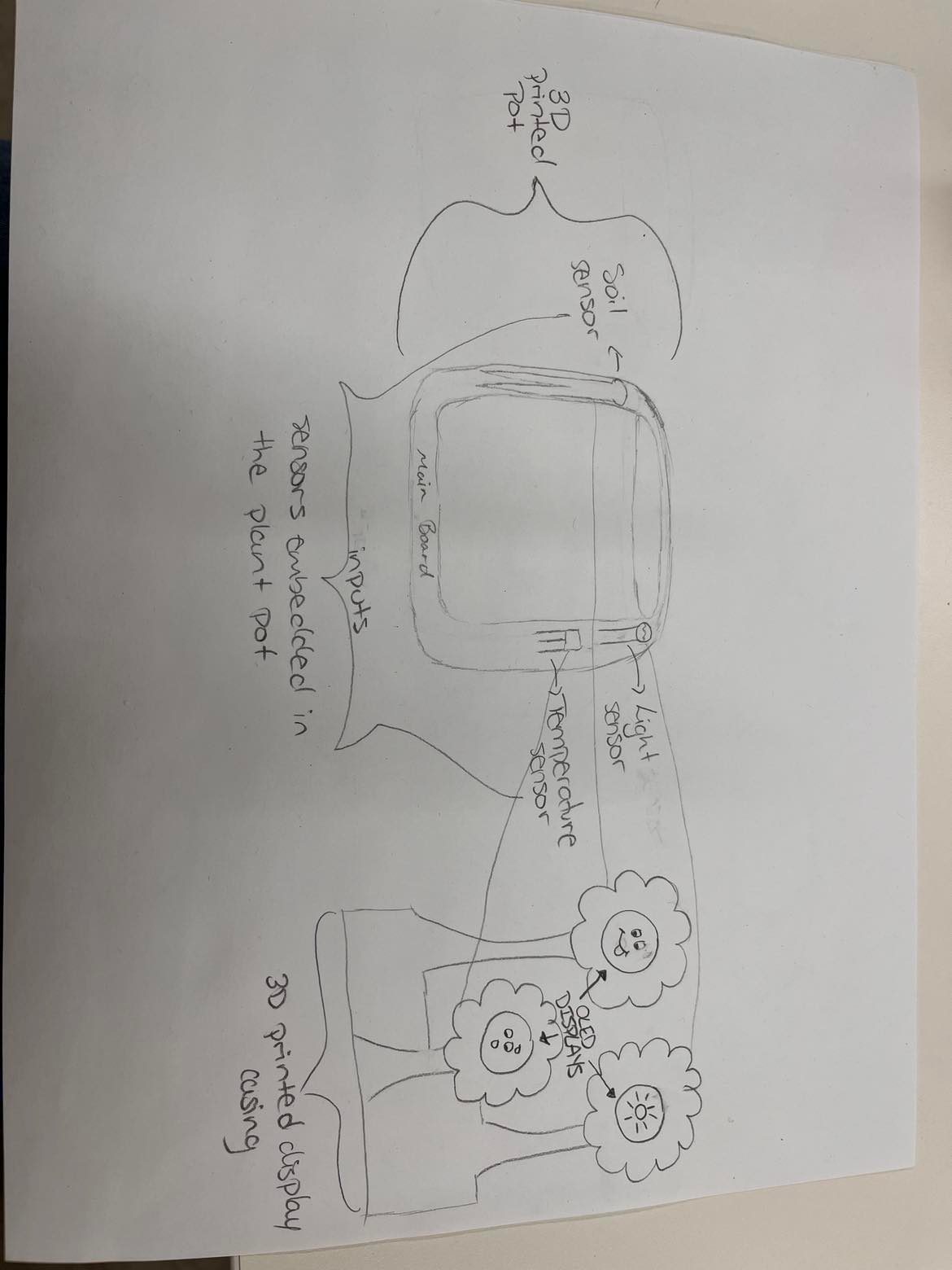









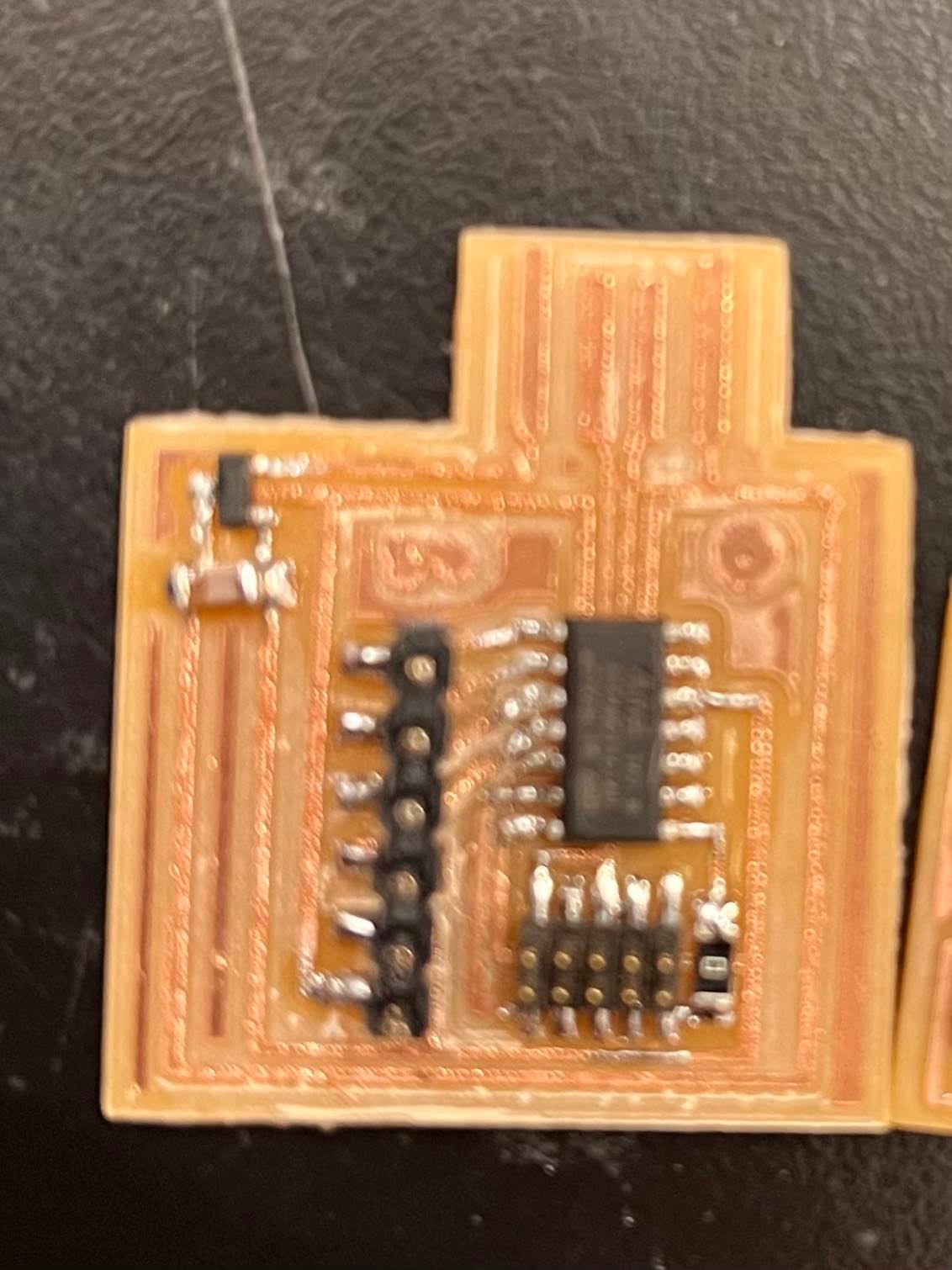
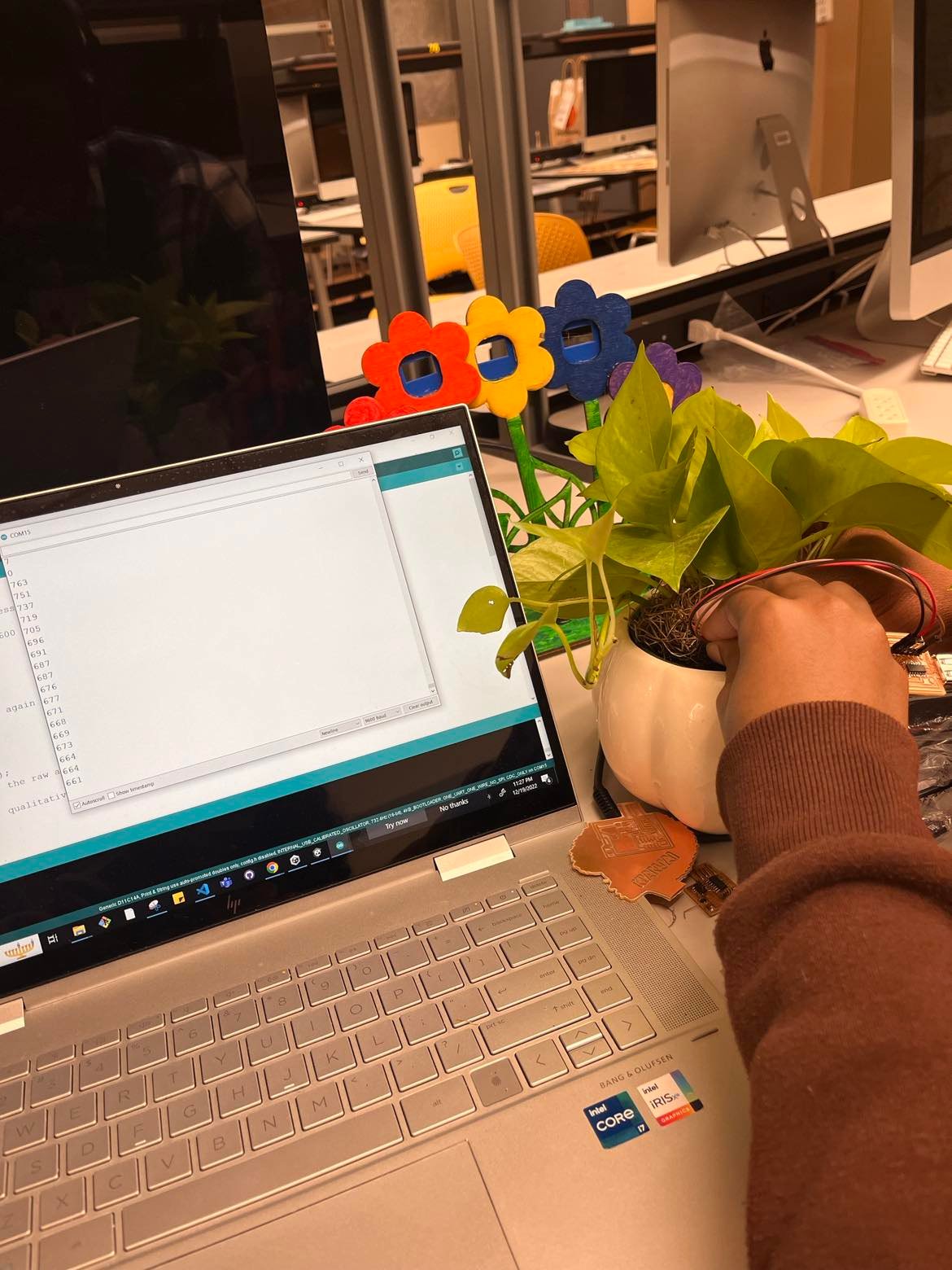
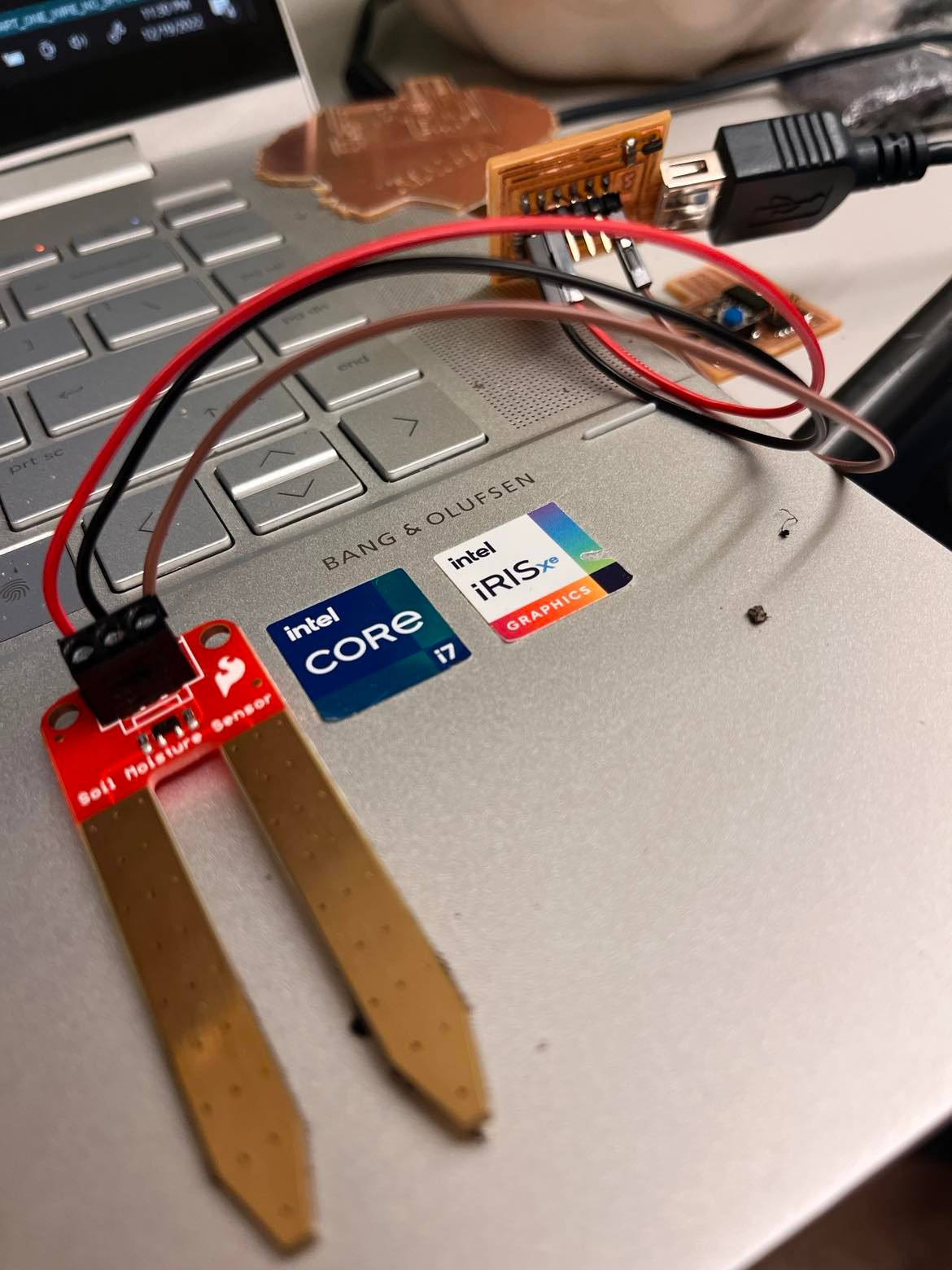






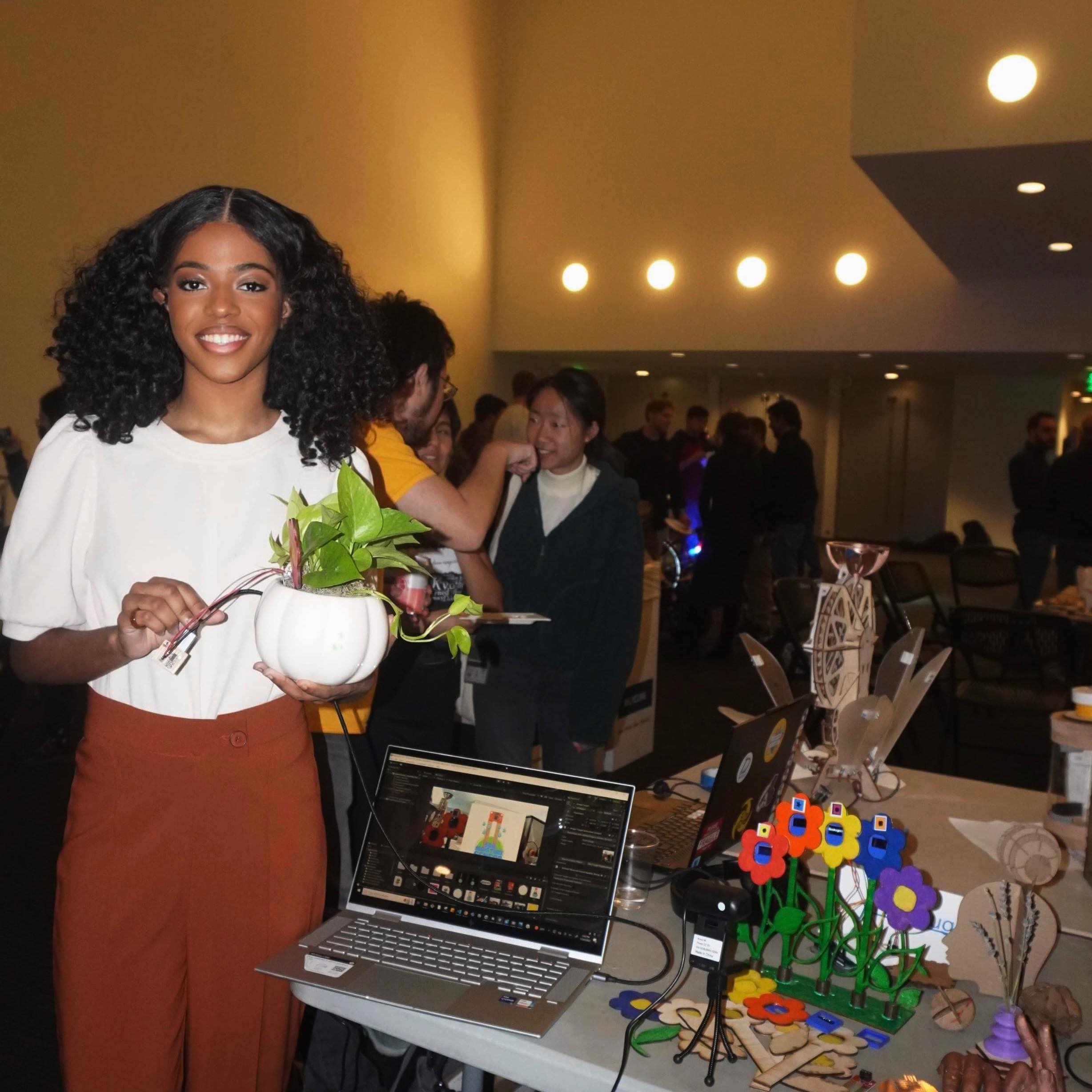
Demo
What does it do?
The system displays the status of light (via OLED display in 3d printed + laser cut display) in the area around a Plant
using a photoresistor. AR and image targets are used (through Unity + Vuforia) to see "inside" the system to give a look at how the soil
moistue sensor is working and its current status via interfacing with arduino.
Who's done what beforehand?
I used the past Happy Pot project for insipiration. Adafruit, Sparkfun, and Elecrow have versions of plant monitoring kits
to assemble and program, mostly for older audiences.
What did you design?
I designed the board that takes feedback from the soil sensor. The laser cut
flower stand, 3d printed oled holders, and 3d printed mini flower pots.
What materials and components were used?
3d printing filament, 3mm wood, SAMD11 board with additional pins, Soil moisture sensor,
photoresistor, wires, external webcam, image tarets & ArduinoUNO
Where did they come from?
I sourced from Digikey, Amazon, and the lab inventory.
How much did they cost?
The estimated cost of components s about $30 with the $20 cost of the 5pack of OLED displays being the bulk of the cost.
What parts and systems were made?
I designed the board that takes feedback from the soil sensor. The laser cut
flower stand, 3d printed oled holders, and 3d printed mini flower pots.
What processes were used?
3D printing, Laser cutting, Electronics production, programming & Augmented reality
What questions were answered?
I learned how to use Unity, AR, Image tracking, Serial controllers between arduino & unity.
What worked? What didn't?
The soil sensor to AR integration woked well. The D21 board that I designed
did not work and thus not having the ability to power all of the displays, so I used an Arduino UNO.
How was it evaluated?
During the showcase, I was able to get feedback from kids That
the project is something that they would use. They really liked the AR asoect and the
emoji, flower display. Iulian also gave insightful feedback throughout the proccess on how to make it an
educational experience which is when AR came in.
What are the implications?
An interactive education kit that utilizes AR to provide insight into how
the components work in an age appropriate way.
Proccess Pictures


















